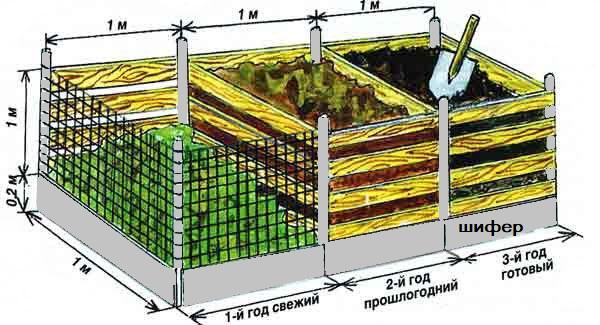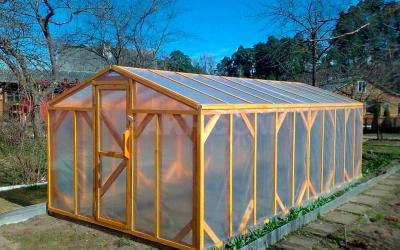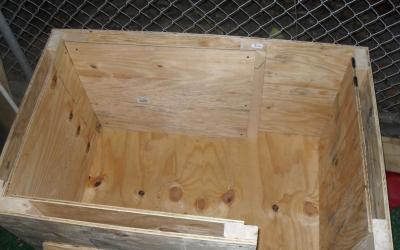Arrangement of a compost pit-3 box options
In agriculture, regardless of its industry and purpose, there is waste of different content and type. A place is set aside for the garbage, so that the quality of the rest of the land used in useful activities does not suffer, and it does not become contaminated. With this task copes with such a device as a compost pit.
Setting up It does not take much time, but the owner of the farmland or his own garden plot will have a means of processing organic residues into humus - another very useful substance in any land ownership.
What is a compost pit
To obtain this type of fertilizer, called compost, which is a combination of waste and decomposition groups from animals, insects, plants and other members of the natural organic world, this mixture is placed in a specialized box made of planks, slate or other material of which it is made. Despite this, the word "pit" is still in use when you need to name or designate this structure.
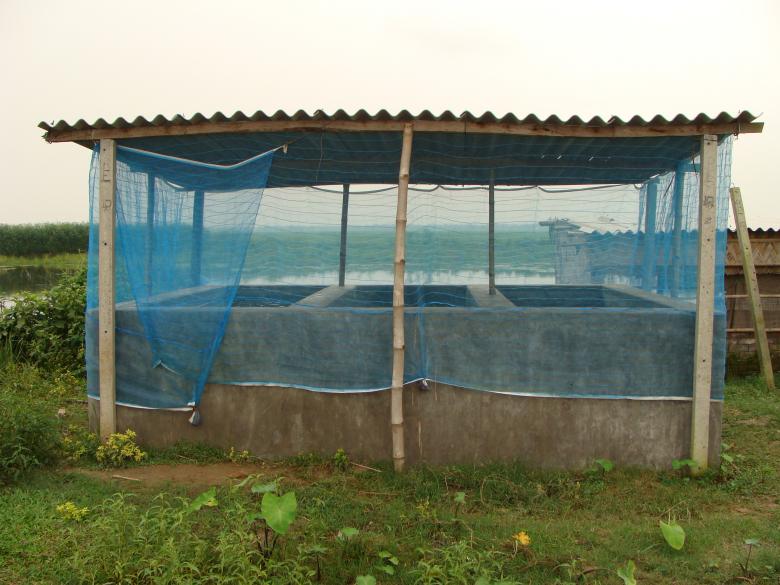
Importantly, in order to start the process of creating compost, you need access to the air of the substances described above. Only then will these waste products not rot, but become fertilizer.
Natural constituents needed to activate and develop the processes that turn the products of decomposition into compost:
- Oxygen - is needed for the carbon to begin the oxidation process, which causes decomposition to occur;
- Nitrogen - is directly involved in the nitrogen exchange;
- Water - accelerates the transformation of the raw material into fertilizer
- Carbon - is responsible for the oxidation reactions;
How to make a compost pit
Obviously, the effectiveness of this design directly depends on a number of factors. It is also worth not forgetting about the specific task, as a result of which a number of requirements for safe placement appear.
Requirements for the location
There is a number of rules that govern the placement of this construction:
- Remoteness from residential buildings and the location of recreational areas
Compost pit not only emits an unpleasant odor associated with the specific activities, but also attracts insects and those who consume them. This leads to the fact that animals will make attempts to get into the house, which definitely cannot be considered good news for the farmer or dacha owner.
- Remoteness from water bodies or springs where drinking water flows or is found
A compost pit, due to its activity, can poison water sources, leading not only to the poisoning of individual living organisms, but also, in the worst case, to the extinction of local fauna. The following rule should be followed: If The siteIf the site on which you plan to put this structure is at an angle, then the device should be placed at the lowest point.

- The choice of location depending on the wind direction in the area
Since the substance with which the decomposition processes take place needs oxygen, it is advisable to choose the location so that there is a constant or frequent source of incoming air, but the smell is not carried away towards the residential areas.
Distance from neighbor's fence
This point is regulated by the SNiP of 30.02.1997, which states that such a structure as a compost pit must be located at a distance of at least 8 meters from the fence of the neighbor's plot.
The device is placed taking into account the wind directions in that area of the area. This will help in the elimination of unpleasant emitting odor during appropriate chemical reactions and preserve the relationship between neighbors.
The compost pit is placed so that it is not exposed to direct sunlight. Light slows down the reactions that occur.
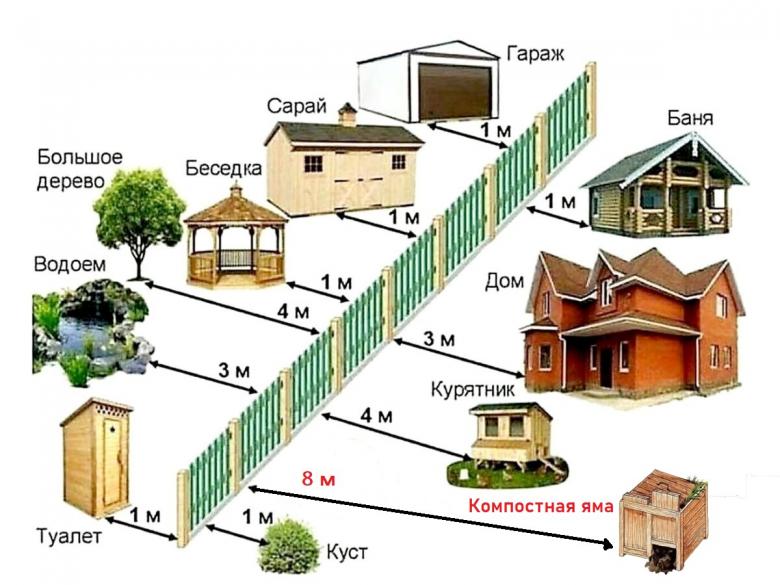
The layout of the compost pit: design features
In order to obtain humus, it is necessary to follow a number of rules that not only make the process cleaner, but also accelerate it. The creation of compost takes place only in an environment where there is a sufficient source of oxygen from the open air, the right percentage of moisture, and the necessary conditions for the bacteria and the creatures that are directly involved in the processing to thrive.
It is important to understand that the waste is turned into compost by bacteria and worms that need oxygen to continue their own activities, just like all other living organisms. They also need heat, the lack of which will slow down or stop working altogether. Humidity provokes the acceleration of these processes, but its excessive amount will lead to overcompaction, so that good production as a result will not turn out.
The level and quality of the soil, the need for mobility of the compost pit and many other factors influence the type and small features of the construction, but there is a brief set of rules:
- In order for the microorganisms in the pus to exist, access to oxygen must be made available. This is created by adding slits and holes in the device;
- In order to allow earthworms to get into this mixture, it must be made so that The bottom of is tightly bordered by the earth or soilThe soil on which the compost pit is set up;
- Since winter temperatures are lower than favorable, it is necessary to build in the use of a cover in this construction to keep a certain level of heat;
- If the farmer or landowner will leave the boundary of the contact of the compost with the earth, it will give moisture to the substance in the absence of moisture and vice versa;
- In the case of a compost pit whose design involves the use of a pit that is below ground level, then the contents will need to be turned over quite often, as it will not receive the necessary amount of oxygen.
What can a box be made of
To create a box for the compost pit you can use a large number of different materials:
- Boards - considered a classic in the production of this kind of devices;
- Plastic - their indisputable advantage is cheapness in cost and a wide range;
- Metal - used because of the severity of the destruction of this material;
- Concrete - the obvious advantage is the durability of the structure, but at the same time there is a problem in mixing the components that are contained within it;
- Brick - another pretty good method that has a durable base underneath it;
- Pallets - an incredibly easy and quick means to create a compost pit;
- Metal mesh - a plus is the large number of holes that will give full access to air.. Not the best choice in regions where it is quite cold;
- Slate - despite the popularity of this means, a significant disadvantage is the difficulty in organization oxygen to such compost pits pits;
- Dense trash bags are the most budget-friendly, troublesome and short-lived option;
Prefabricated containers made of plastic
A significant advantage of this kind of containers is their availability in stores, the cheapness of production and, consequently, their market price. Available in a wide range, so that the farmer or farmer has an opportunity to get a box of desired design and size.
Certain advantages are:
- The compactness of the construction created from this material. It is sold unassembled, so if you need to transport or change location, just quickly disassemble it and put it back together again;
- Intelligent factory air filtration system;
- Built in during engineering with a lid and door for mixing or taking out material;
- Minimalism in design;
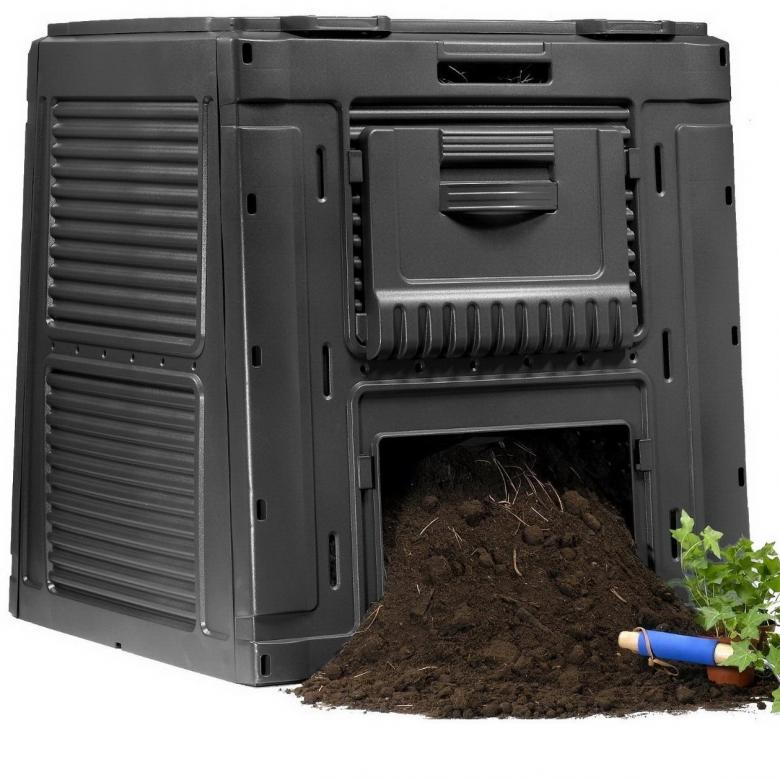
However, you must remember that plastic is not a strong material, which over time, the box can get enough damage that the entire structure will fail.
Wooden box
Wood has always been considered a good material for buildings. When choosing its type and quality, you should keep in mind that the compost pit will stand on the plot quite a long time, due to which an illiterate or hasty decision can spoil the entire visual appearance.
To ensure that the wood does not deteriorate before time, before proceeding to build the structure, the right solution would be to carry out a treatment with a specialized solution against the processes of decay. As a result, you should have a device that is strong enough, has the necessary capacity and a door needed for mixing and retrieving the humus.
Making box made of planks Can be broken down into several stages:
- Selection of the right boards, their appropriate visual and mortar treatment;
- Cleaning the area for the structure from the turf and leveling;
- Installation of the base by digging into the perimeter of the bars to a depth of 40-50 cm;
- Attaching horizontal boards to them;
- Placing the door for mixing the mixture;
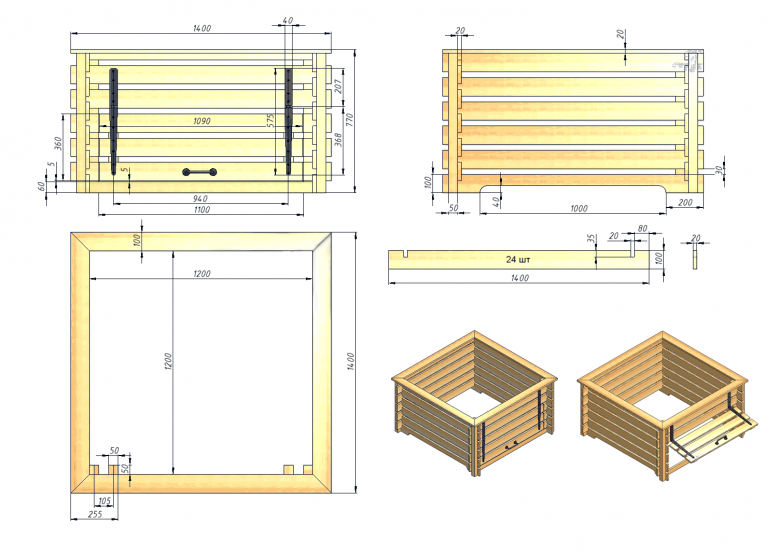
A good option is to attach on 1/3 of the total height of the device metal mesh, through which the humus will fall. The result will be a clean, high quality and oxygenated compost.
Pallet construction
The obvious advantage of using pallets in the creation of a compost pit can be considered the incredible simplicity method and the speed with which this construction is created:
- First, it is necessary to connect the elements so that they organized in the horizontal plane of a square or rectangle, depending on the wishes of the owners;
- A lid is attached on top to keep warm in winter;
- The structure is wrapped with mesh so that the contents do not spill out in the wrong direction;
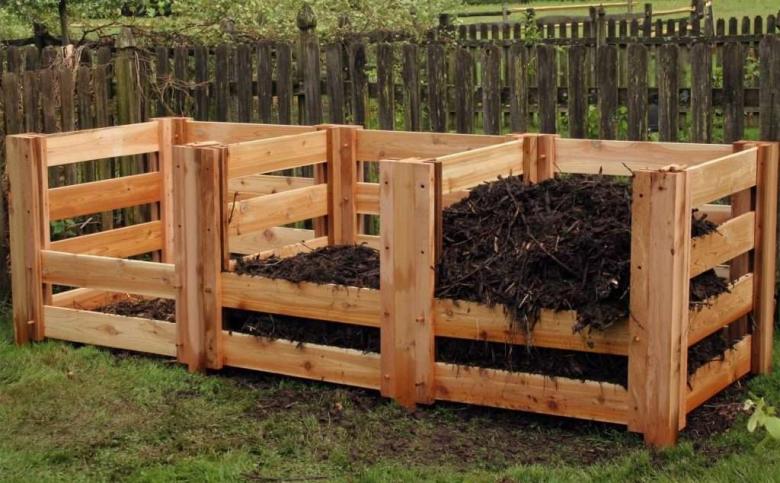
The construction of this construction will not take more than a few hours, but the result will be a fully functional compost pit with an excellent ventilation system.
How to make a proper compost pit in a garden Video description
Watch: How to make a compost pit with your own hands - step by step
Compost pit from slate with their own hands
The advantage of slate compost pit on a summer cottage with their own hands should be considered its stability, which is obtained due to the specific type of attachment of this material.
- It is necessary to dig pits at least 40 cm deep so that they form a long trench in the form of a rectangle or square;
- In the pits strictly vertically placed slate and firmly buried. Each layer of earth should be additionally tamped, as otherwise the slate will loosen and break in the future;

Since slate is a sharp and rough material, it is advisable for safety to make shell from a soft material. A hose or a layer of rubber is ideal for this purpose.
Dimensions of the compost pit-design variants
Due to external natural conditions affecting the course of reactions in the compost pit, it is generally accepted that its most balanced size in the dacha is 1 cubic meter. This is due to the fact that in excessive heat, the products in the structure will simply not have time to turn into fertilizer, and during the cold weather will not release the necessary amount of heat needed for the functioning of microorganisms.
Conventional Pit
When using a design based on using the space below ground level ., a number of factors should be evaluated. First of all, you should understand that in this case, the contents will not get enough oxygen, because of which from time to time it will need to be stirred. On the other hand, it will save the desired space and partially save the site from spoiling the visual appearance of the box. Secondly, access to the products of life will be more accessible, due to which the chance of various not the most desirable insects increases. The inconvenience of reaching under the pile of compost that has already been created is an unpleasant factor.

Two-piece composter
This type of compost pit is considered the most progressive and useful among the others. It constructed so that, instead of using one box, two boxes are used at the same time. The contents have to be completely transferred from one box to the other several times during the season. This significantly more saturates the humus with oxygen. This operation provokes a jump in microbial activity, resulting in a much faster composting process.
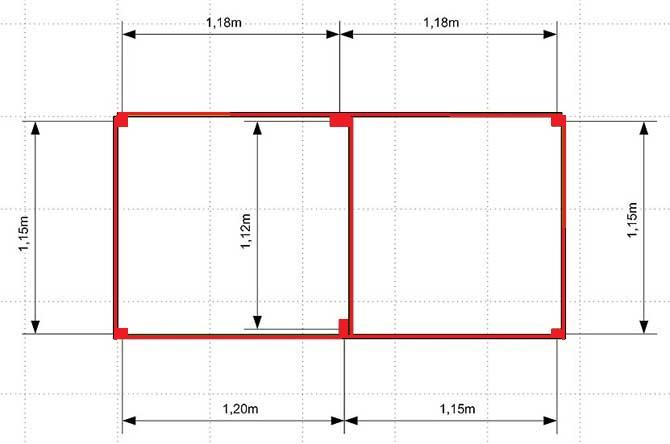
Single-section composter
This technique is the most popular, well-known and budget-friendly. This is the type of composter sold in most stores. They have the advantage of eliminating the disadvantage of a compost pit and taking up much less space than a two-part composter. Manufacturers initially build in a special door for retrieving and mixing the contents. Production of a compost pit with their own hands of this type should also not cause serious difficulties.
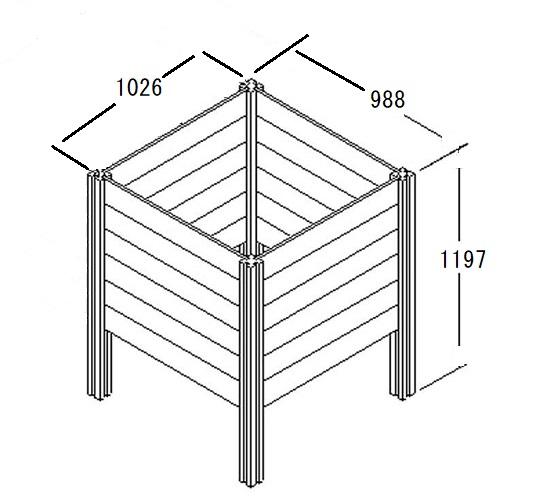
Concrete box
The box, created from such a durable material, has a number of useful qualities and unpleasant disadvantages. On the one hand, the construction made of concrete can be considered the most durable and long-lasting. The farmer should not worry that someone will crawl into his compost pit. On the other hand, this device Not only is it not designed to be moved, but it is also problematic to demolish. The appearance cannot be considered attractive either. The contents will not get the right amount of oxygen, which makes the landowner obliged to turn it over from time to time.
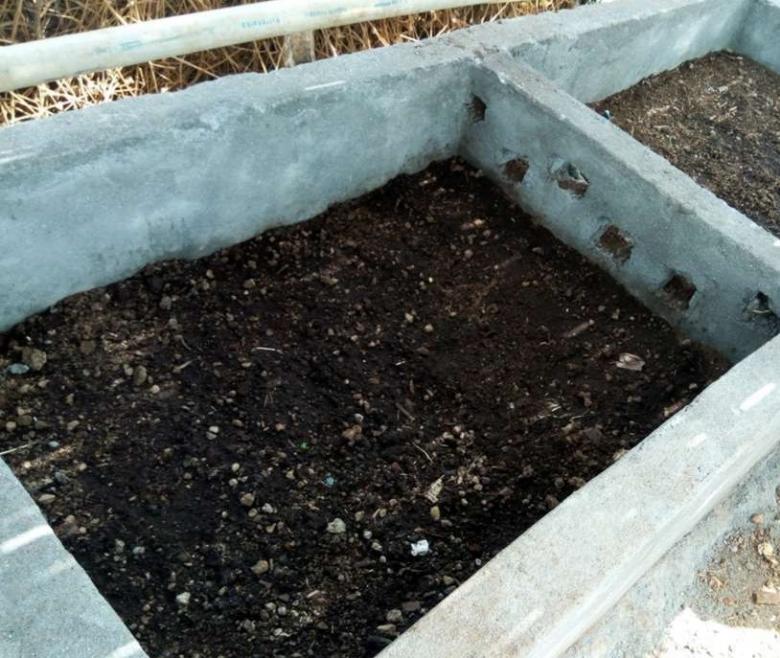
Prefabricated plastic container
Plastic compost pits Are the most popular in various farms. There are many reasons for this:
- Boxes of this type are very cheap and generally available, their purchase is not a problem;
- The design and visual presentation of the facility often does not spoil the appearance of the entire site;
- During production, the necessary doors and openings for oxygen are made immediately;
- A compost pit of this type can be easily disassembled, assembled and moved from place to place.
What can be put in.
Since compost is the result of the process of decomposition, it is important to understand exactly what falls under these requirements:
- In the autumn period, the basis of the compost heap are fallen leaves, of which there is a large amount on the site;
- Various weeds or grass;
- Purges and various vegetable or fruit products;
- The haulm;
- Small parts of bushes or trees;
- Cardboard or paper.
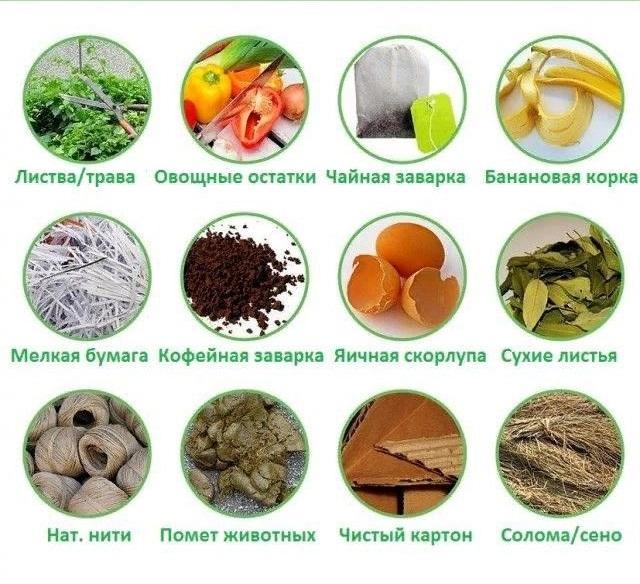
To speed up the decomposition processes, it is necessary to follow the order in which the products are stacked.
1. Brown waste.
The basis of the compost pit should be solid waste products. Tree branches, shrubs, plant roots, cones, and bark fit the description.
2. Green waste.
Above it is competent to place soft products such as berries, leaves, plants themselves, weeds and so on.
What must not be put in the compost pit
You should avoid putting human or animal digestive residues, meat organisms, lime and chemicals in the compost. The chemicals will spoil the humus, which is likely to poison the soil on the site, and the meat products will attract the attention of uninvited guests.
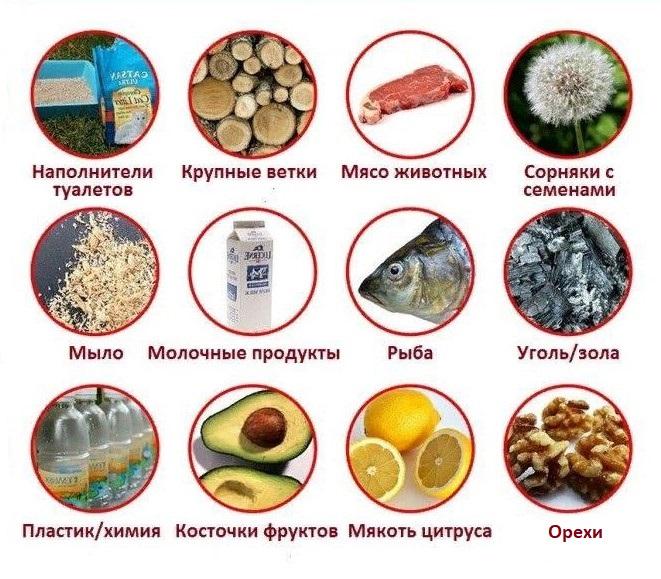
How long before the fertilizer is ready
Depending on the quality of the compost pit, compliance with the right rules, and the use of tools to accelerate the decomposition process, compost is formed in a period of 3 months to 2 years from the time the contents are placed in the box or pit. If a farmer needs a lot of humus, it is advisable to make two or three compost pits rather than one larger one. This will speed up the process.

